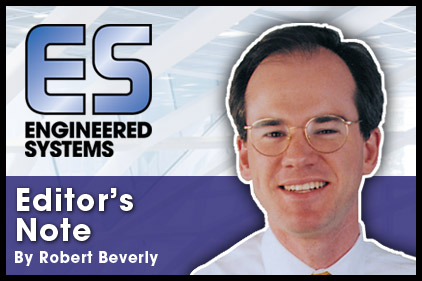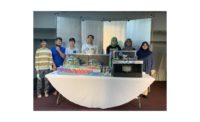That’s the word from Justin Davis, P.E., LEED® AP. While I would rather not believe this, I have to think it’s true. Take a second and think back through the sands of time. Like me, many of you endured your entire secondary and/or higher-ed experience with no internet access whatsoever. Not even wired, not even dial-up, not even Netscape … nothing.
For some of us, maybe that was a good thing; merely the traditional distractions were plenty. Yet, while we can appreciate the great technological strides made between then and now, for today’s students, “now” is just their baseline, their normal. Likewise, says Davis (who is a senior project manager for Smith Seckman Reid), their normal learning environment often goes beyond a bunch of desks in a room with a teacher and a chalkboard. Both in terms of teaching/class methods and the variety of locations for learning, things have changed.
Engineers need to keep up with the expanded range of learning circumstances and what that broader spectrum means for building systems. In this month’s exclusive online-first ES feature, get Davis’ perspective on what all this means for designers and their approach to educational projects.
GLOBAL FOOTPRINT
Events for adults have changed, too. Waiting for a general session to start at last month’s Niagara Summit in Las Vegas, attendees could see the Niagara-hashtagged tweets from others that Tridium projected onto the large screens. There’s almost nothing in that last sentence that would have made sense ten years ago. Of course, the “new normal” really asserted itself when the guy in front of me used his phone to aim and record the opening video presentation projected onto the screens.
Later in the session, Tridium CEO Steve Fey updated the crowd on the incredible mobile computing trends taking place. He cited an estimate that even by 2020, mobile traffic will have seen a 33x increase over 2010 levels. Tablet use is on the rise, and smartphone use is rising more sharply than that.
Fey used this data to illustrate the need for (and value in) managing what he called Big Data and its new home in the cloud. (“The cloud” is another phrase I bet some of you saw for the first time in Ken Sinclair’s columns here in ES.) And of course, this led to what Tridium is doing about this — specifically, five new mobile apps covering mobile histories and scheduling, alarm schedules, and more.
While this presentation was starting, some folks were still coming in, as happens in large events. Those people are usually left to fend for themselves, looking for seats in the dark. But here, they got help in a way I hadn’t seen before: Summit staff were scattered around the very large ballroom, moving inconspicuously but holding fairly tall signs indicating that there were open seats where the staff person was standing. It expedited the process, which I suspect improved the experience for presenter and the seated and the latecomers alike, and it also helped fill in the front better.
I couldn’t help thinking this simple addition, a platoon of sign-waving seat guides, was some sort of old-tech metaphor for modern info management and the data/cloud circumstances on the agenda. Information, efficiently transferred and effectively stored for quick and useful recall. That’s still a deceptively complex goal, whether the material is Shakespeare or building data, and whether the destination is young minds or virtual storage. It also paired up nicely with a quote displayed during the morning:
“Creativity is thinking up new things. Innovation is doing new things.”
- Theodore Levitt
From seat-signalers and cloud management to the Rutgers and Stanford retrofit efforts discussed in this issue, that innovation might be embracing a cutting-edge opportunity or it might be managing your existing resources in a smarter way. Here’s hoping we all have at least one such moment this month. ES
ESWebinars
All webinars are free.
Registration and archives at
http://webinars.esmagazine.com
JUNE 12
Protecting The Outdoor
Environment From Unwanted
Equipment Noise
Sponsored and presented by SEMCO.
IndustryEvents
JUNE 13-14
Energy Efficiency Forum 2012
Cosponsored by Johnson Controls &
USEA
Washington. For info,
JUNE 23-27
ASHRAE 2012 Annual Conference
San Antonio. For info, visit








